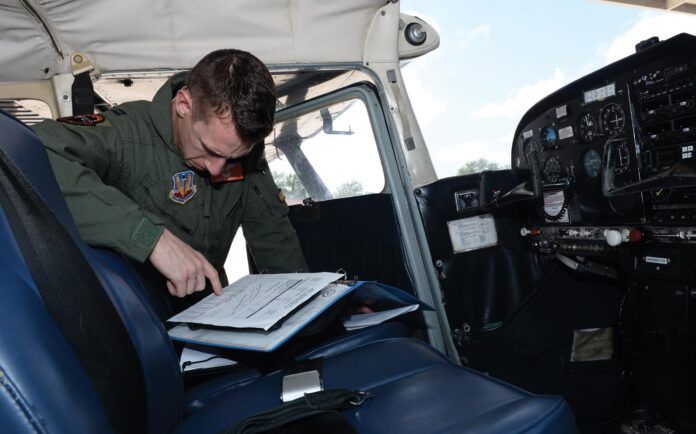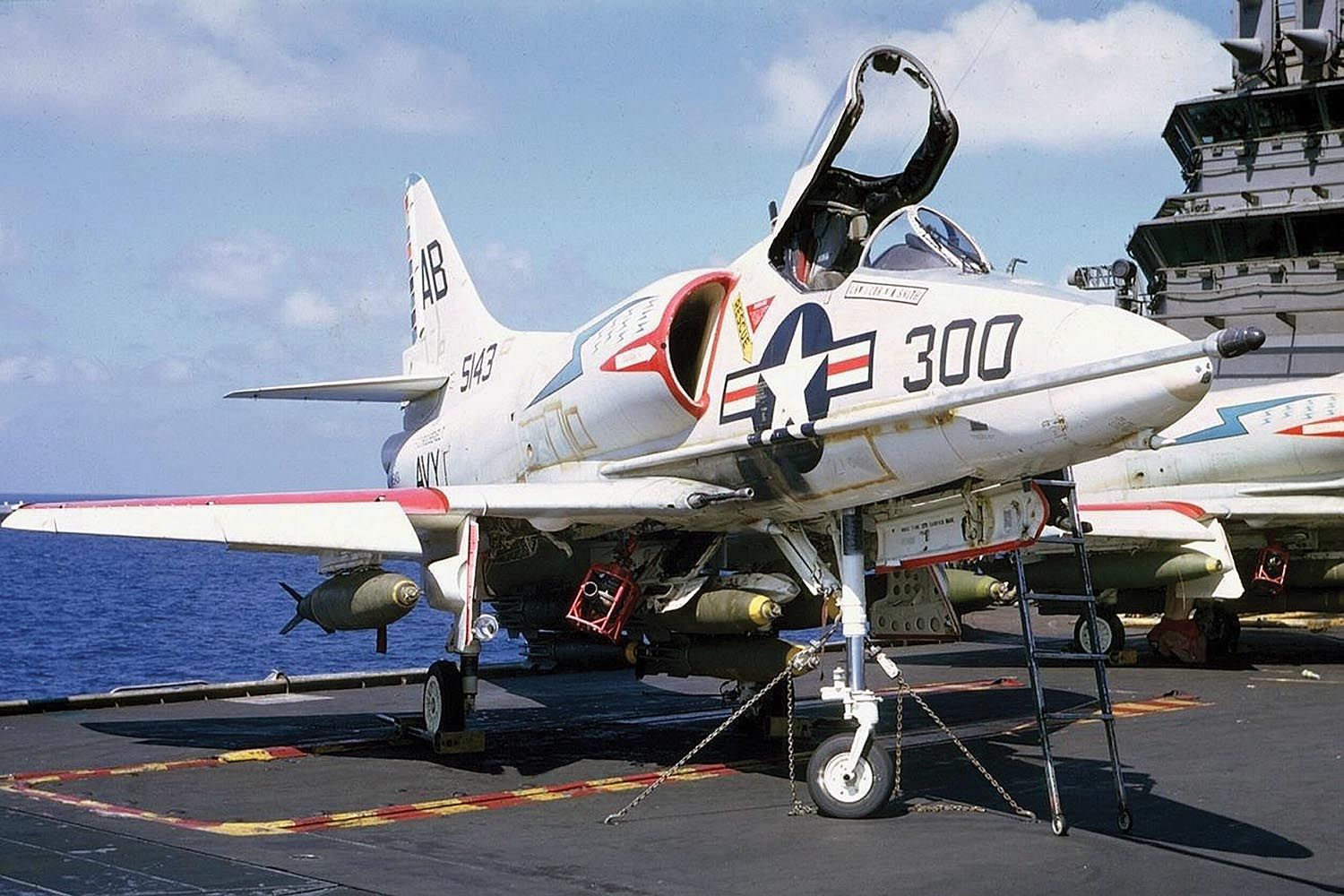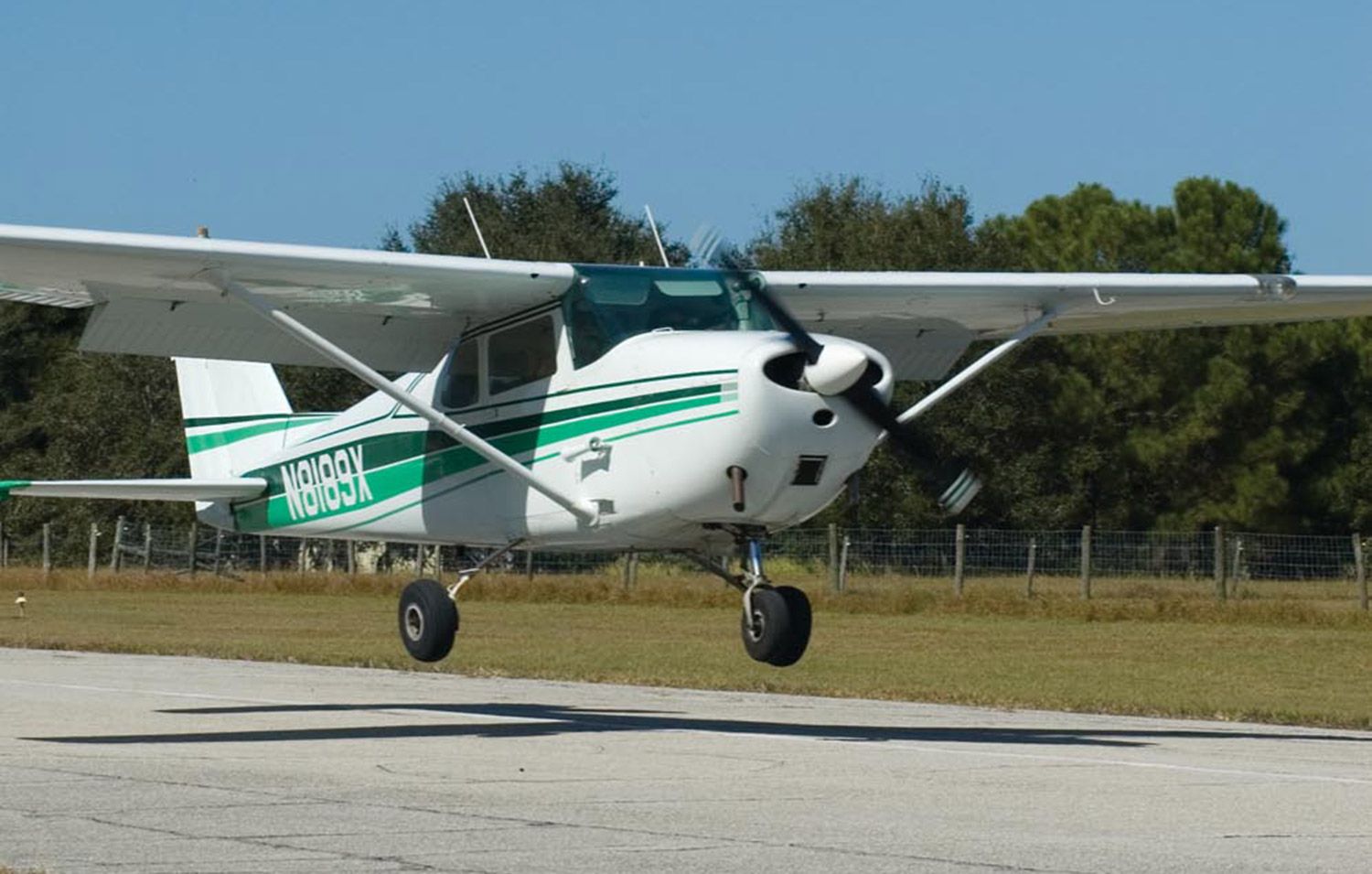
Back when I was a pilot in the U.S. Air Force, people would sometimes ask me, “What’s it like to fly?” A better question would have been, “What’s it like to fly in the civilian world?” Then I would have known the answer, and could’ve puffed out my pilot chest and answered confidently, “I have no idea.” I only had USAF flight experience until I morphed from my green caterpillar flight suit into a civilian butterfly/pilot. This metamorphosis involved me starting from scratch, or ab initio, in a Cessna 172. Ab initio, of course, is Latin for “dangerous student pilot who does sit-ups.”
When coming from the military, the FAA doesn’t care about two-engine, four-engine or even eight-engine jet time. (B-52 bomber pilot on a go-around: “Everybody grab a throttle! We’re going around!”) I found out the FAA doesn’t allow military pilots to fly a 172—even if they have a multi-engine ATP certificate—until they add single-engine privileges. Who knew?
Too Fast For Conditions
So there I was, a former USAF T-38 Talon instructor pilot training in a Cessna 172, flying with different CFIs. I was finally cleared to go solo, and off I went, trying to practice landings. Trying. At a nearby airport, I came in for a landing, flared and bounced five times—bang! bang! bang! bang! bang!—then finally did a go-around. It was such a surprise to me, all that bouncing, like the ground was rejecting me, pushing me back up into the air.
Shook up mentally (and physically), I flew back to my home field and the same thing happened—I bounced about five times. Right in front of the tower controllers and the flight schools. This time I full-stopped on the sixth bounce—the aircraft sort of ran out of energy and stayed on the ground—breathing heavily and sweating and snorting, like a horse that just ran a race.
I was simply trying to land. The 172, in super-technical aerodynamic terms, wasn’t having it and fought back. Rattled by all the bouncing, I called a very experienced airline pilot friend who was a CFI for many years and described to him this miserable, uncooperative, bucking bronco of an airplane.
He said sarcastically, “Hey—why don’t you try landing it on-speed?” He was right. I had flown the 172 with several CFIs, all good guys, but none pointed out that I was landing too fast. I tried landing the 172 on-speed and, of course, it worked. I thought of calling my buddy back and saying, “You were right,” and maybe I will someday.
Military Training
So somehow, the various CFIs—each teaching landings their own way—didn’t catch that I had been landing the 172 hot and somehow getting away with it, driving it onto the runway like a jet and then bleeding off speed, instead of the other way around. No wonder I was hit-and-miss on landings.
I don’t think I would have been signed off to go solo in the Air Force had I been landing too fast. The instructor pilots would have spotted it with their little reptile eyes, and bit off my head. You see, the Air Force’s method of teaching was very standardized and very precise—you flew approaches and landings right at certain airspeeds—not even a few knots fast. Heaven forbid you got slow. Altitude was the same—right on, not 50 feet off, even, the instructor calling out, “Altitude,” or “Airspeed,” or the always helpful, “I HAVE THE AIRCRAFT!”
Later, when I became a civilian CFI, students would be off pattern altitude by 50 or 100 feet on downwind, and be offended when I called out “altitude.” I mean, if you can hold it an even 80 feet low, you can hold it “right on,” too.
 A couple of lives ago, I had a professional colleague who had served in the U.S. Marine Corps. I don’t know much about his service, but for some period of time he was a pilot, flying the Douglas A-4 Skyhawk off one aircraft carrier or another. I do know his service was during the Vietnam War, and like so many other veterans, he wasn’t forthcoming on what he had seen and done in those years. Out of respect, I never pushed him to talk about it.
A couple of lives ago, I had a professional colleague who had served in the U.S. Marine Corps. I don’t know much about his service, but for some period of time he was a pilot, flying the Douglas A-4 Skyhawk off one aircraft carrier or another. I do know his service was during the Vietnam War, and like so many other veterans, he wasn’t forthcoming on what he had seen and done in those years. Out of respect, I never pushed him to talk about it.
One Labor Day weekend, neither of us had plans, so I hopped in a Cessna 172 Skyhawk and flogged it from Northern Virginia to his home in Connecticut. He and his wife were excellent hosts, and we had a relaxing weekend together.
Our conversations involved flying, of course, so one afternoon I offered to take them both on a local sightseeing flight. We spent a fun hour or so viewing their locale from the air, flying out over Long Island Sound and generally enjoying ourselves. The flight was uneventful and soon we were back on the ground.
Later, back at their home with adult beverages in-hand, he allowed that he hadn’t flown since leaving the Corps. But he did confess he was scared witless that afternoon when he noticed the Cessna’s airspeed indicator as we approached a landing. “At sixty-five knots, an A-4 will be falling out of the sky!” he said.
To me, the punchline here is two-fold. First, any transition from military flying to general aviation is going to be fraught with challenges, in part because of the different training intensities. Second, transitioning military pilots require specific training and a clear understanding that treating a piston single like a much heavier and faster jet is a recipe for a mishap. Or a series of bounced landings. — J.B.
Stand And Deliver
In the Air Force, we had the much-feared “stand-up” each and every morning on the flightline. Turns out “stand-up” is an excellent motivator to study. The IPs will find out if you’re not studying, and you “look good” if you spit out the correct answers.
The IP would set it up something like this (which actually happened to me, I’m embarrassed to say, quite far along in the flight training program).
IP: “Lieutenant Johnson.”
Me (standing rigidly at attention): “Yes, ma’am!”
IP: “You are taxiing out to fly in your T-38, and you see a flashing red light from the tower. What do you do?”
I said, “Ma’am, I’d do a 360 and return to parking, Ma’am.”
IP, speaking slowly, the room suddenly as quiet as a Mooney driver at a Bonanza type club meeting: “You’d do a 360, and return to parking?”
Me: “Yes, Ma’am.”
The IP, turning her attention away from me and focusing her death-ray eyes on another student: “Lieutenant Williams, you can take the aircraft from where Lieutenant Johnson left off, or you can start from the beginning.”
Lieutenant Williams, popping to his feet: “Ma’am, I’d like to start from the beginning, Ma’am.”
This is when the student—me—knows they dorked up something, and will now be grounded for the day as a penalty, their nametag shamefully turned upside-down on the magnetic scheduling board. The IPs did everything but make you wear a scarlet G.
Lieutenant Williams continued: “I would stop and do a 180-degree turn, and return to parking, Ma’am.”
Civilian Training
Some years later, as a civilian CFI, I frequently would ask student pilots questions, but they wouldn’t know the answers: How to do a high-speed abort? What is the radio call when entering the pattern? What are ALL the radio calls in the pattern?” These should have been easy questions, but were they grounded for the day for not knowing the answers? Nope. One student’s attitude could be summed up as, “I’ll learn to fly by flying,” not studying. Maybe, or even probably, but it takes longer.
The USAF had good reasons to compress the learning time, and compress it they did. You might have two flights in the morning, and then an instrument simulator in the afternoon. Then study and chair-fly; it was hectic, a full-time job.
It’s a bit different in the civilian/GA world, isn’t it? A student pilot can fly the minimum number of hours and take a checkride, or they may require a LOT more hours before they’re ready. A student may have, say, 30 hours of flight time and not be cleared to solo. Not so in the military, which has a strict syllabus, and only so many flying hours are allowed, after which a student pilot is “washed out” if they don’t complete the curriculum. Civilian pilots go up again and again until they get it right—or give up, like some do, via “SIE” (self-initiated elimination).
The Air Force had tremendous standardization. Every IP taught the same way and used the same terminology. In the civilian world, while working with different CFIs, every single one of them taught differently, and were proud of it. Different methods, different verbiage, on and on. A CFI might state confidently—on YouTube, even—“This is how I like to teach the chandelle,” or some other maneuver that pilots have been flying since Eddie Rickenbacker was dogfighting with Germans in WWI. Standardization is quite practical, if used, because if and when a student flies with a different instructor, there are no surprises—that “different” instructor uses the “same” methods, verbage, radio calls, everything.
Student/CFI Relationships
Another difference I noticed between military flying and GA is that we general aviation pilots get trained by civilian CFIs whom we pay—and can fire. A CFI can “fire” us, too, handing us off to another instructor, which happened to me twice in the Air Force.
It seems like half the battle when teaching some students is getting them to believe that we know what we’re talking about, without being overly firm and harsh, and getting the boot. There’s no rank on our shoulders, and the students are paying for the lesson, so it’s different than in the military, where a student can be grounded or “washed out.” When I was a student in the USAF, I didn’t request a new instructor, ever.
I’ve sometimes heard the term “low-threat,” both in the Air Force and out in the wild, the instructor saying to the student, “Don’t worry, this is a low-threat flight.” What the instructor means is you won’t be graded harshly on this flight, or graded at all. But is flying ever really “low-threat?” You have your sudden engine loss soon after takeoff, your weather, your birdstrikes, your other traffic, on and on.
I have to keep my guard up on all flights—maybe especially “fun” flights, or “low-threat” flights, as a student or as a CFI. “What could go wrong? We’re just going up for a short flight.” Anything. That’s what could go wrong. The unbreakable laws of physics and aerodynamics always apply when flying, even a short flight.
Similarities?
Maybe the biggest difference between military and GA training is all the “adult supervision” the military offers, versus the freedoms of the lone CFI at some small airport. But the value of good, standardized preflight briefings, frequent review of emergency procedures, good checklist usage, clear verbal instructions—they’re the same whether we’re wearing a uniform or a Hawaiian print shirt and non-flame-retardant shorts.
Speaking of clothes—one thing I do think was better in the Air Force is the clothing. The flight suit. It had just this one long zipper, and—zziiip!—you were dressed.
How about general aviation aircraft maintenance vs. military? In my experience, general aviation maintenance is way worse than military maintenance. (Yes, I know the government has unlimited money to spend on maintenance, and doesn’t have to turn a profit.) I’ve had GA shops butcher my airplane on a quite-regular basis. Sometimes the first flight after maintenance has been, uh, quite sporty.
With that in mind, I have some recommendations for general aviation maintenance shop mottos:
Bob’s Aircraft Repair: Did you find a ½-inch socket and a blue shop rag?
Jim’s Airplane Shop: Just give us the logbook—we’ll take care of it.
Not that I have a strong opinion about this, of course.



